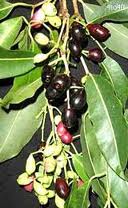http://www.sidhhaherbs.blogspot.com
Our Daily Food Serves As Our Medicine
முட்டைகோஸ்
Yes! What ever we eat there is a vital value in it. Be it fruits, vegetables or grains and even flowers contain a lot of vitamins. But we don't tend to know the nutritious value in it; nor we care about it.
Like other leaf vegetables, cabbage contains vitamin K, the blood-clotting vitamin produced naturally by bacteria in our intestines.
Additional intake of vitamin K may reduce the effectiveness of anticoagulants (warfarin, Coumadin, Panwarfin), so that larger doses may be required cooked.
For Cancers And ulcers
Don't think less about cabbage. After the 5th day of giving birth the breast will be tight and painful and the pain will pave her to get fever .
Just apply 2or3 leaves under the bra and the pain will vanish off.
For chronic ulcer drink the fresh juice one or two times along with Siddha medicine and you will be cured.
Cabbages are also a good source of riboflavin.
Nutritive Values of Cabbage (Per 100 gm) Protection against certain cancers. Naturally occurring chemicals (indoles, isothiocyanates, glucosinolates, dithiolethiones, and phenols) in cabbage, Brussels sprouts, broccoli, cauliflower, and other cruciferous vegetables appear to reduce the risk of some cancers, perhaps by preventing the formation of carcinogens in your body or by blocking cancer-causing substances from reaching or reacting with sensitive body tissues or by inhibiting the transformation of healthy cells to malignant ones
.
.
Cabbage and lettuce differ in their nutritional content, composition and taste. Though they are both considered to be leafy green vegetables, cabbage is generally eaten cooked while lettuce is often left uncooked Cabbage has a slightly thicker leaf, often with a purple tinge. Lettuce is thinner and more chewable. Both contain many vitamins and minerals with little calories and fat.
Monoamine oxidase (MAO) inhibitors.
Monoamine oxidase (MAO) inhibitors are drugs used to treat depression.
They inactivate naturally occurring enzymes in your body that metabolize tyramine, a substance found in many fermented or aged foods. Tyramine constricts blood vessels and increases blood pressure. If you eat a food such as saucer kraut which is high in tyramine while you are taking an Mnticoagulants.
There are three different types of Cabbage- green, red and Savoy. The red and green cabbages are crinkly in texture and crunchier than the Savoy variety. Whatever the variety is the inside is cleaner and of lighter colour. Even though the inside of the cabbage is clean you should cut the cabbage and wash under running water. Sometimes worms or insects can appear in cabbages grown organically and inspection and cleaning is a must.
To cut cabbage into smaller pieces, first quarter it and remove the core and then cut into slices of varying thickness, grated by hand or shredded in a food processor.

Like other leaf vegetables, cabbage contains vitamin K, the blood-clotting vitamin produced naturally by bacteria in our intestines. Additional intake of vitamin K may reduce the effectiveness of anticoagulants (warfarin, Coumadin, Panwarfin), so that larger doses may be requiredAO inhibitor, you cannot effectively eliminate the tyramine from your body. The result may be a hypertensive crisis Always it is preferable to eat raw.
You may wash it with salt water, then the germs bacteria will come out and then eat as it is. You may sprinkle a bit of pepper or chilly and onions ans a bit of salt.
PURPLE CABBAGE is richer than usual one in vitamins and in money voice.
Consist of more vitamins so it costs more.; but the activities and the benefits are more or less the same.
When you cut open do remember to clean it leaf by leaf because it may contain minute germs ,
இயற்கையின் அருட்கொடைகள் அனைத்தும் மனிதனுக்கு ஏதோ வகையில் பயன்பட்டு வருகிறது. உலகில் மனிதன் தன் தேவைக்காக இயற்கையை அதிகம் பயன்படுத்துகிறான்.
மனித இனம் தோன்றிய காலம் முதலே அவர்களுக்கு காய், கொடி, கீரை, பழம் என பல வகைகளில் இயற்கையானது உணவளித்து வருகிறது.
இதையே சித்தர்களும் ஞானிகளும், அன்றாடம் உண்ணும் உணவின் மூலம் எப்படி ஆரோக்கியத்தை வளர்த்துக்கொள்வது என்பதையும், அவற்றை எக்காலங்களில் உண்ணவேண்டும், எப்படி உண்ணவேண்டும் என்பதை தெளிவாகக் கூறியுள்ளனர்.
இப்படி அன்றாட உணவில் நாம் சேர்த்துக்கொள்ளும் காய்கள், கீரைகள், பழங்களின் மருத்துவக் குணங்களை நம் ஒவ்வொரு இதழிலும் அறிந்து வருகிறோம். அந்த வகையில் நாம் அடிக்கடி உபயோகிக்கும் முட்டைகோஸ் பற்றி தெரிந்து கொள்வோம்.
முட்டை கோஸ் கீரை வகையைச் சேர்ந்தது. இதன் கொழுந்து உருண்டையாகக் காணப்படும். இதனையோ உணவாகப் பயன்படுத்துகிறோம்.
இதில் உயிர்ச்சத்துக்கள், தாதுக்கள் நிறைந்துள்ளன. உடலுக்கு ஊட்டம் தரும் உணவாகும். உடல் வளர்ச்சிக்கு முட்டை கோஸ் மிகவும் சிறந்தது.
முட்டைகோஸின் மேல் பகுதியில் மூடியிருக்கும் முற்றிய காய்ந்த இலைகளை நீக்கிவிட்டு சிறிதாக நறுக்கி பாசிப்பயறுடன் சேர்த்து கூட்டாகவோ அல்லது பொரியலாகவோ செய்து சாப்பிடலாம்.
முட்டைகோஸ் உண்பதால் ஏற்படும் நன்மைகள்
கண் பார்வைக் கோளாறுகளைப் போக்கும். கண் பார்வை நரம்புகளை சீராக இயங்கச் செய்யும். இதில் உள்ள வைட்டமின் ஏ சத்து கண் பார்வைக்கு சிறந்தது.
மூல நோயின் பாதிப்பைக் குறைக்கும். அஜீரணத்தால் உண்டாகும் வயிற்றுவலியை நீக்கும்.
சரும வறட்சியை நீக்கும். சருமத்திற்கு பொலிவைக் கொடுக்கும்.
வியர்வைப் பெருக்கியாக செயல்படும். சிறுநீரை நன்கு பிரித்து வெளியேற்றும்.
எலும்புகளுக்கு வலு கொடுக்கும். இதில் சுண்ணாம்புச்சத்து அதிகமிருப்பதால் எலும்புகளும் பற்களும் உறுதியாகும்.
பெண்களுக்கு மெனோபாஸ் காலங்களில் உண்டாகும் கால்சியம், பாஸ்பரஸ் இழப்பை முட்டைகோஸ் ஈடுசெய்யும்.
நரம்புகளுக்கு வலு கொடுக்கும். நரம்புத் தளர்ச்சியைப் போக்கும்.
தொற்று நோய்கள் ஏற்படாமல் தடுக்கும். உடலுக்கு நோய் எதிர்ப்பு சக்தியை அதிகரிக்கும்.
முட்டைகோஸை நீரில் போட்டு சிறிது நேரம் ஊறவைத்து அந்த நீரைக் கொண்டு முகம் கழுவினால் வறட்சியான சருமம் பளபளப்படையும்.
உடல் சூட்டைத் தணிக்கும். நாள்பட்ட மலச்சிக்கலைப் போக்கும். குடல் சளியைப் போக்கும். இரத்தத்தை சுத்தப்படுத்தும்.
தலைமுடி உதிர்வதைக் குறைக்கும். மயிர்க்கால்களுக்கு பலம் கொடுக்கும்.
முட்டைகோஸின் பயன்களை அறிந்து அதனை நம் உணவில் சேர்த்து நீண்ட ஆரோக்கியம் பெறுவோமாக..!

.jpg)
naval3.jpg)
naval.jpg)




+psillium.jpg)

.jpg)





